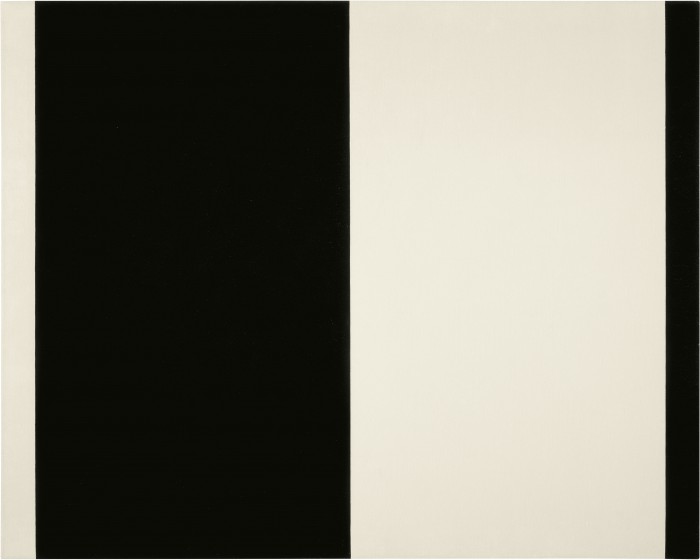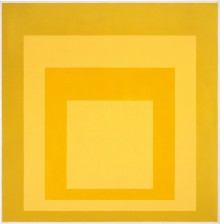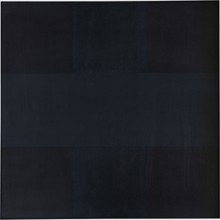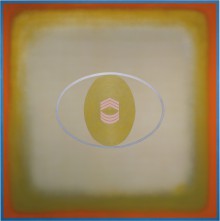John McLaughlin
#13 1962

Reproduction of this image, including downloading, is prohibited.
Audio Description (01:03)
Full Audio Transcript (Expand)
#13
Five feet wide by four feet tall, this maximally minimal and geometric oil painting by John McLaughlin is titled #13. Painted in 1962, it is a sheer panel perfectly divided down the middle by a hard boundary between white on the right and black on the left. They are as uniform and opposite as the squares on a machine-made checkerboard, and each extends virtually to the edge of the painting. But along the right edge the white meets a strip of black, and on the left the black meets an identically slender strip of white, so that white and black alternate across the panel, each boundary neatly parallel to the next. At the same time, the left and right strips, in their slender presence at the edge of the painting, seem to frame it, like margins or a picture frame. For moments, the painting seems simply and entirely white on the left and black on the right, and to float forward from the wall in the way of a 3D or stereoscopic image. The piece seems to demonstrate something about how brains make sense of what the eyes take in, but also works as décor. It ornaments and beautifies the wall it hangs on, despite its conceptual simplicity.
Spirituality and the Ethics of Inspiration
The sixteenth-century Japanese painter Sesshū included in his landscape paintings what he called the “Marvelous Void.” This void was an open space on the canvas between the sparsely placed objects (trees, houses, etc.) that allowed the viewer to metaphorically step into the painting. John McLaughlin was educated at private boarding schools and universities where he took an interest in Japanese painting, eventually traveling to Japan to study and paint. McLaughlin’s goal for his painting was to induce the viewer to become aware of perception itself, rather than focusing on the shapes or objects in the painting. He argued that the Marvelous Void was one way to invite the viewer to enter the painting and experience perception. As you look at this painting, ask yourself: Where does your eye move? How does your body react?
—Callum Tresnan ‘23







